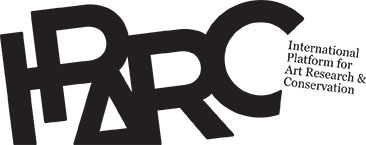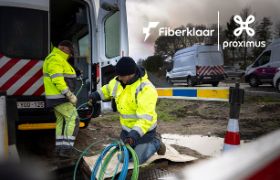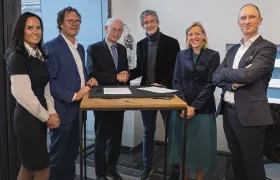Proximus and IPARC partner for more efficient conservation of art works thanks to SmartCare application
 Proximus and IPARC, the International Platform for Art Research and Conservation, have agreed to collaborate on the integration of new technologies in art conservation. With Smart Care, they will market a smart IoT solution which monitors the environmental conditions of artworks. Proximus' technical know-how combined with IPARC's expertise in the sector will result in an end-to-end service for museums, art institutions, private collectors, and other organizations with activities in the arts sector.
Proximus and IPARC, the International Platform for Art Research and Conservation, have agreed to collaborate on the integration of new technologies in art conservation. With Smart Care, they will market a smart IoT solution which monitors the environmental conditions of artworks. Proximus' technical know-how combined with IPARC's expertise in the sector will result in an end-to-end service for museums, art institutions, private collectors, and other organizations with activities in the arts sector.
Smart Care: monitoring and adjusting the environmental conditions of artworks
Smart Care uses sensors which monitor humidity, temperature, and light exposure in the immediate vicinity of artworks, and detect the movements of passers-by. The sensors are connected to Proximus' Internet of Things network using LoRaWAN technology. By generating an automatic alert in case of unexpected changes, Smart Care makes it possible to respond more quickly and efficiently to changes in light intensity or sudden temperature fluctuations.
Proximus is responsible for the technology behind the application (both the connectivity and hardware) and the development of the web application, whereas IPARC, besides taking care of customer relations, is responsible for the site survey and installation of the data loggers, as well as the monitoring, analysis, and interpretation of the collected data. Based on this data and specific insights arising from it, IPARC can offer specific advice for optimizing environmental factors and, if necessary, adapting the conditions in which an artwork is exhibited or stored.
A logical collaboration between complementary partners
In September 2017, Proximus marketed an application for the arts sector based on the Internet of Things. The application was initially developed to manage Proximus' own art collection more efficiently, but was then made available to external parties. The new applications underscore Proximus' leadership in the field of IoT – the technology that provides buildings, machines and household appliances with sensors and connects them to each other and to the Internet. With approximately 1.3 million connected objects to date, Proximus is the market leader in Internet of Things in Belgium.
IPARC is an established name in the art sector in Belgium as well. The organization can rely on extensive experience in the conservation, restoration, research and storage of artworks and collections for numerous art institutions and public as well as private collections throughout the country. End-2015, IPARC set up a preventive conservation branch whose main aim is to create an optimal environment for storing and exhibiting artworks and cultural heritage.
In this context, IPARC initiated the SmartCare development program, which mainly focused on consulting services combined with the specialized restoration team’s knowledge of materials. Today, the program is transformed into a formal partnership with Proximus.
With our IoT solutions, we want to help companies and organizations work smarter and make their processes more efficient. Developing an ecosystem of different partners allows us to offer end-to-end solutions and applications that have added value for companies and end users. By joining forces with IPARC, we bring a partner with in-depth knowledge and specific expertise in the field of arts into the fold. This allows us to offer more than just hardware and connectivity: together, we can provide all the building blocks of a complete IoT solution adapted to the customer’s needs.
The collaboration with Proximus gives us access to an efficient IoT environment and a considerable development capacity. This has the important advantage of allowing IPARC to focus on its core competencies so that we can organize our knowledge service more efficiently. SmartCare offers our public and private customers the possibility to depart from preventive conservation, monitoring, and analysis, and use IPARC's know-how to make more precise adjustments in the storage conditions of artworks. The collaboration also allows us to make the solution scalable so that we can also offer art insurers and transporters a specific solution in the short term.


